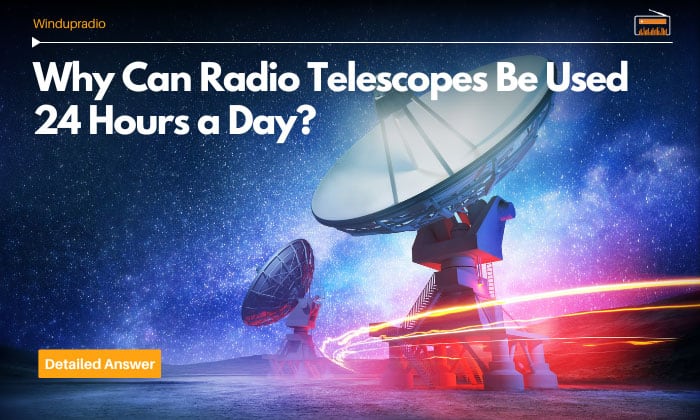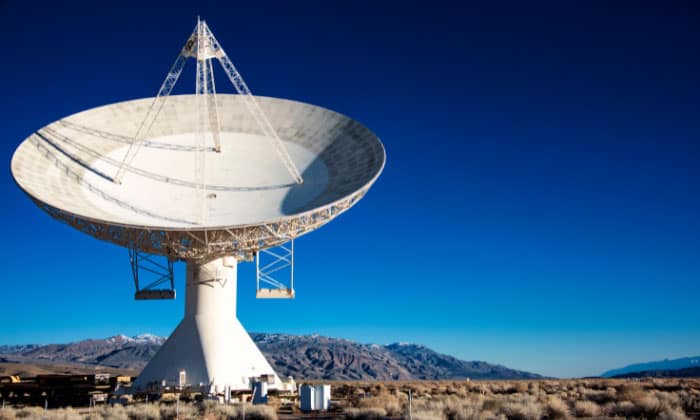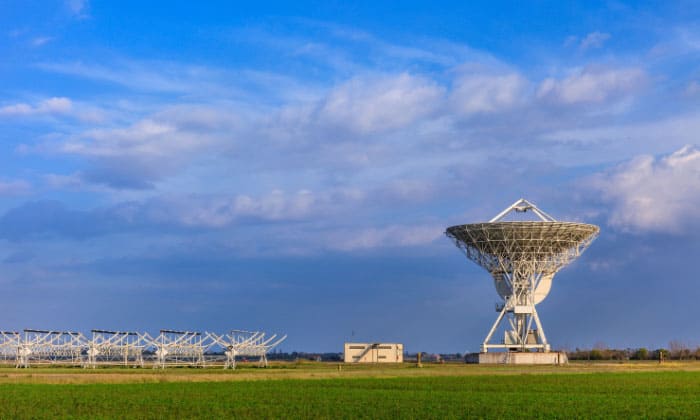So, why can radio telescopes be used 24 hours a day? You’re probably reading this guide because you’re clueless.
Radio telescopes can be used 24 hours a day because light does not affect the way they work. Whether it is day or night, they can do what they are designed to do.
Read on to learn more about radio telescopes, including why they can work round-the-clock without compromising performance.
Table of Contents
Why Can Radio Telescopes Be Used 24 Hours a Day?
The main reason why radio telescopes work 24 hours a day is that sunlight and darkness do not affect the radio spectrum. Even clouds will not hinder the radio telescope’s functionality.
So, whether it’s dark or bright, even if the sun’s not out or when it’s raining, the radio telescope will work.
Radio telescopes used during the day or night will work just the same. Even if the sun does not emit enough light in radio frequency, the radio telescope can detect signals.
It can also observe regardless of the weather. Even in snowstorms, fog, and hail, radio telescopes will function.
What Are Radio Telescopes? What Are They Used For?
When talking about telescopes, the first thing that comes to mind is an optical telescope. It is a useful tool for seeing objects at a distance. It focuses on the parts of the electromagnetic spectrum that the human eye can see.
However, although not as popular, radio telescopes are also telescopes. In a nutshell, it’s a directional radio antenna with most of its uses focusing on radio astronomy.
Radio telescopes are important in astronomy. They are utilized for studying astronomical objects that emit radio waves. These telescopes can be used for the investigation of stars and planets.
More so, they are used in the same way that optical telescopes magnify distant images by collecting visible light. Radio telescopes, on the other hand, use weak radio waves. They amplify them, so they can be analyzed.
While we’re at it, let’s also talk about some radio telescope facts. Below are some good things to know:
- The largest telescope in the world for detecting radio signals is the one in Arecibo Observatory in Puerto Rico. It was built in 1963 and believed to have a radio dish bowl worth as much as $9 million.
- Telescopes used for analyzing radio waves are massive. Radio wavelengths are larger compared to their visible light counterparts. The diffraction limit is another reason why radio telescopes need to be large.
- Radio observations are difficult to The long wavelengths make it difficult to have a good resolution. Even large telescopes are not as detailed as their smaller counterparts that capture visible light.
Conclusion
Why can radio telescopes be used 24 hours a day? As noted above, it’s because they work whether it’s day or night. They collect radio signals to analyze whether there’s sun or none. Even clouds, snow, and similar weather conditions do not limit their functionality.

Hi, I am Amaro Frank – the Wind Up Radio’s content editor and writer. Working with Adam is so much fun, as his stories and experiences enrich my knowledge about radio communications and radio accessories. My main tasks in Wind Up Radio are building content and generating great articles on different topics around radio accessories.




